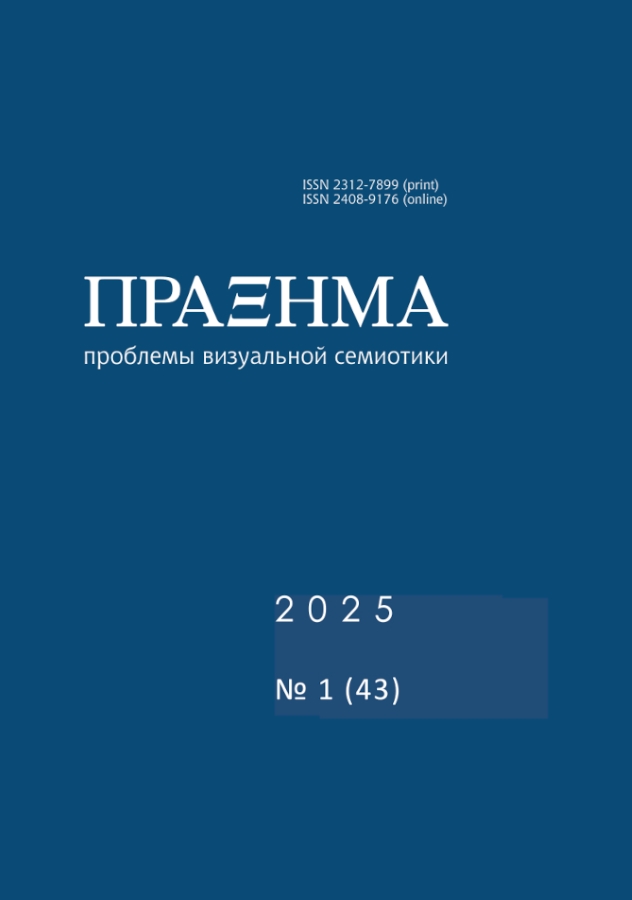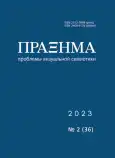ТИПОГРАФИКА КАК СОЦИАЛЬНЫЙ ИНДЕКС: СОВЕТСКИЙ ЛАНДШАФТ В СОВРЕМЕННОМ РОССИЙСКОМ ДИСКУРСЕ
- Авторы: Чернявская В.Е.1,2
-
Учреждения:
- Санкт-Петербургский политехнический университет Петра Великого
- Балтийский федеральный университет им. И. Канта
- Выпуск: № 2 (2023)
- Страницы: 50-73
- Раздел: СТАТЬИ
- URL: https://journal-vniispk.ru/2312-7899/article/view/270263
- DOI: https://doi.org/10.23951/2312-7899-2023-2-50-73
- ID: 270263
Цитировать
Полный текст
Аннотация
Об авторах
Валерия Евгеньевна Чернявская
Санкт-Петербургский политехнический университет Петра Великого; Балтийский федеральный университет им. И. Канта
Email: tcherniavskaia@rambler.ru
доктор филологических наук, профессор Политехническая ул., д. 29, Санкт-Петербург, 195251, Россия; Ул. Александра Невского, д. 14, Калининград, 236016, Россия
Список литературы
- Абрамов 2019 – Абрамов Р. Н. Отношение к позднему советскому прошлому как объект социологического исследования // Общественные науки и современность. 2019. № 5. С. 108–120.
- Зубкова 2019 – Зубкова Е. Ю. Советская жизнь как предмет исторической реконструкции // Российская история. 2019. № 5. С. 3–14.
- Кирсанов 2007 – Кирсанов Д. М. Историко-морфологическая модель развития русского наборного шрифта. Взаимосвязь объективных и субъективных факторов : автореф. дис. … канд. искусствоведения. М., 2007.
- Молодыченко 2019 – Молодыченко Е. Н. Коммуникативно-прагматические особенности «лайфстайл-инструкции» как интернет-жанра в культуре потребления // Вестник Томского государственного университета. Филология. 2019. № 57. С. 79–102. doi: 10.17223/19986645/57/5.
- Молодыченко 2020 – Молодыченко Е. Н. Метасемиотические проекты и лайфстайл-медиа: дискурсивные механизмы превращения предметов потребления в ресурсы выражения идентичности // Russian Journal of Linguistics. 2020. Т. 24, № 1. С. 117–136. doi: 10.22363/2687-0088-2020-24-1-117-136. URL: http://journals.rudn.ru/linguistics/article/view/23252
- Молодыченко, Чернявская 2022 – Молодыченко Е. Н., Чернявская В. Е. Социальная репрезентация через язык: теория и практика социолингвистики и дискурсивного анализа // Вестник Санкт-Петербургского университета. Язык и литература. 2022. № 19 (1). С. 103–124.
- Чернявская 2020 – Чернявская В. Е. Метапрагматика коммуникации: когда автор приносит свое значение, а адресат свой контекст // Вестник Санкт-Петербургского университета. Язык и литература. 2020. № 1. 135–147.
- Чернявская 2021a – Чернявская В. Е. Социальное значение в зеркале политической корректности // Вестник Санкт-Петербургского университета. Язык и литература. 2021. № 2 (18). С. 383–399. doi: 10.21638/spbu09.2021.208.
- Чернявская 2021б – Чернявская В. Е. Текст и социальный контекст: социолингвистический и дискурсивный анализ смыслопорождения. М. : УРСС, 2021.
- Agha 2007 — Agha A. Language and Social Relations. Cambridge : Cambridge University Press, 2007. (Studies in the Social and Cultural Foundations of Language; vol. 24).
- Androutsopoulos 2004 – Androutsopoulos J. Typography as a Resource of Media Style: Cases from Music Youth Culture // Proceedings of the 1st International Conference on Typography and Visual Communication/ K. Mastoridis (ed.). Thessaloniki : University of Macedonia Press, 2004. P. 381–392.
- Bain, Shaw, Bertheau 1998 — Bain P., Shaw P., Bertheau P. T. (ed.) Blackletter: Type and National Identity. New York : Princeton Architectural Press, 1998.
- Backhaus 2007 – Backhaus P. Linguistic Landscapes: A Comparative Study of Urban Multilingualism in Tokyo. Clevedon : Multilingual Matters, 2007.
- Blommaert 2005 – Blommaert J. Discourse: A Critical Introduction. Cambridge : Cambridge University Press, 2005.
- Blommaert 2013 – Blommaert J. Ethnography, Superdiversity and Linguistic Landscapes: Chronicles of Complexity. Bristol ; Buffalo ; Toronto : Multilingual Matters, 2013. (Critical Language and Literacy Studies; vol. 18).
- Bourdieu 1991 – Bourdieu P. Language and Symbolic Power. Cambridge, MA : Harvard University Press, 1991.
- Crystal 1998 – Crystal D. Toward a Typographical Linguistics // Type: A Journal of the Association Typographique Internationale. 1998. Vol. 2 (1). P. 7–23.
- Daniels, Cosgrove 1988 – Daniels S., Cosgrove D. Introduction: iconography and landscape // The Iconography of Landscape: Essays on the Symbolic Representation, Design, and Use of Past Environments / S. Daniels, D. Cosgrove (eds.). Cambridge : Cambridge University Press, 1988. Р. 1–10.
- Eskilson 2007 — Eskilson S. J. Graphic Design:A New History. Yale University Press. 2007.
- Foucault 1997 — Foucault M. What is Critique? [Qu’est-ce que la critique? (Critique et Aufklärung)] // Foucault M. The Politics of Truth. Los Angeles : Semiotext(e), 1997. P. 41–82.
- Gorter 2013 – Gorter D. Linguistic landscapes in a multilingual world // Annual Reviеw of Applied Linguistics. 2013. Vol. 33. Р. 190–212.
- Gumperz 1992 – Gumperz J. J. Contextualization Revisited. In P. Auer, & A. di Luzio (Eds.), The Contextualization of Language. Amsterdam and Philadelphia: Benjamins. 1992. Р. 39–53.
- Huebner 2016 – Huebner T. Linguistic landscape: history, trajectory and pedagogy// Journal of Humanities. 2016. Vol. 22. Р. 1–10.
- Kress, van Leeuwen 1996 – Kress G., van Leeuwen T. Reading images. The grammar of visual design. London : Routledge, 1996 (1st ed); 2006 (2nd ed.).
- Kress, van Leeuwen 2001 – Kress G., van Leeuwen T. Multimodal Discourse: The Modes and Media of Contemporary Communication. London : Hodder Education, 2001.
- Kress 2010 – Kress G. Multimodality: A social semiotic approach to contemporary communication. Abingdon : Routledge, 2010.
- Silverstein 1979 – Silverstein M. Language Structure and Linguistic Ideology // The Elements: A Parasession on Linguistic Units and Levels/ P. R. Cline, W. Hanks, C. Hofbauer (eds.). Chicago : Chicago Linguistic Society, 1979. P. 193–247.
- Spitzmüller 2015 – Spitzmüller J. Graphic Variation and Graphic Ideologies: A Metapragmatic Approach // Social Semiotics. 2015. Vol. 25 (2) (thematic issue “Typographic Landscapes”; ed. by J. Järlehed, A. Jaworski). Р. 126–141.
- Spitzmüller 2021 – Spitzmüller J. Approaching Typographic Variation // Vestnik of St. Petersburg University. Language and Literature. 2021. Vol. 18 (4). Р. 910–928.
- Stöckl 2005 – Stöckl H. Typography: Body and Dress of a Text – a Signing Mode Between Language and Image // Visual Communication. 2005. Vol. 4 (2). Р. 204–214.
- Stöckl 2009 – Stöckl H. The language-image-text – Theoretical and analytical inroads into semiotic complexity // Arbeiten aus Anglistik und Amerikanistik. 2009. № 34 (2). S. 203–226.
- Van Leeuwen 2005 – van Leeuwen T. Typographic Meaning // Visual Communication. 2005. Vol. 4 (2). Р. 137–143.
- Van Leeuwen 2006 – van Leeuwen T. Towards a Semiotics of Typography // Information Design Journal.2006. Vol. 14 (2). Р. 139–155.
Дополнительные файлы







